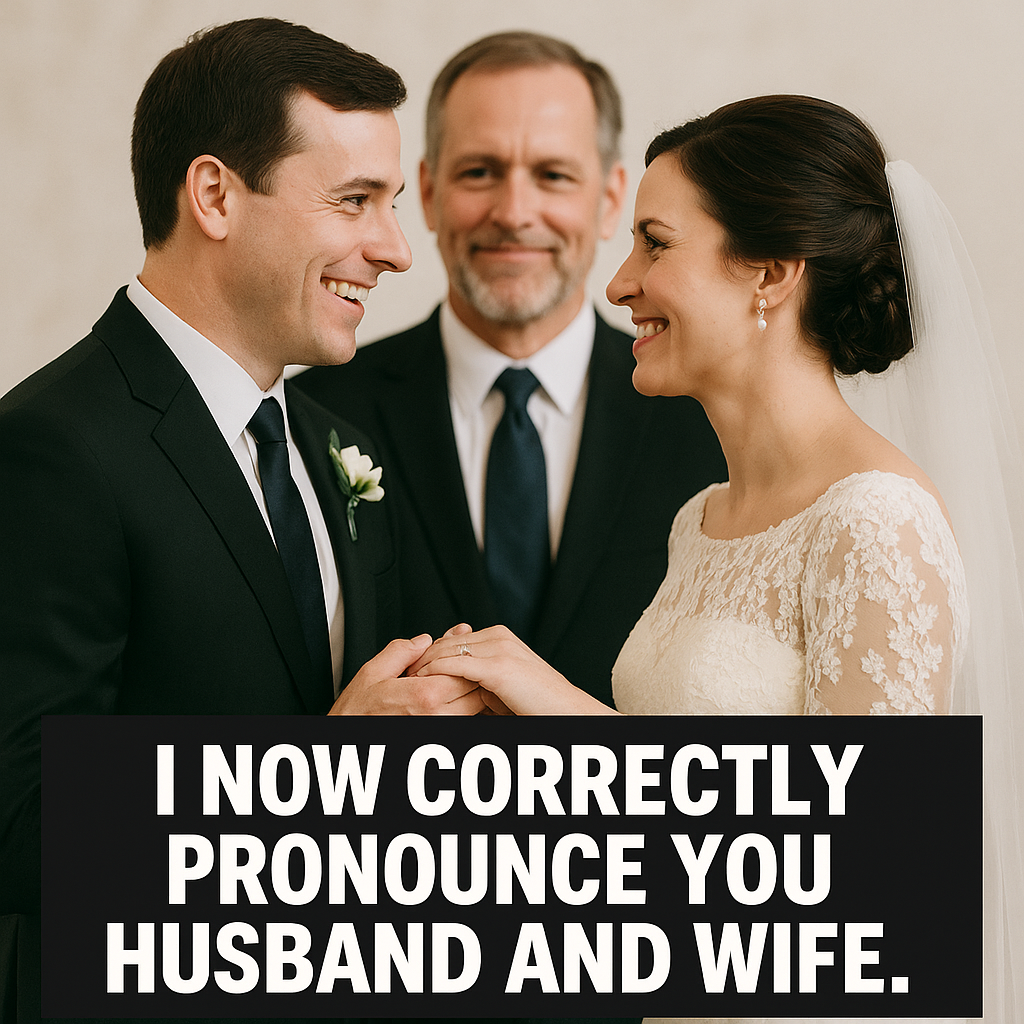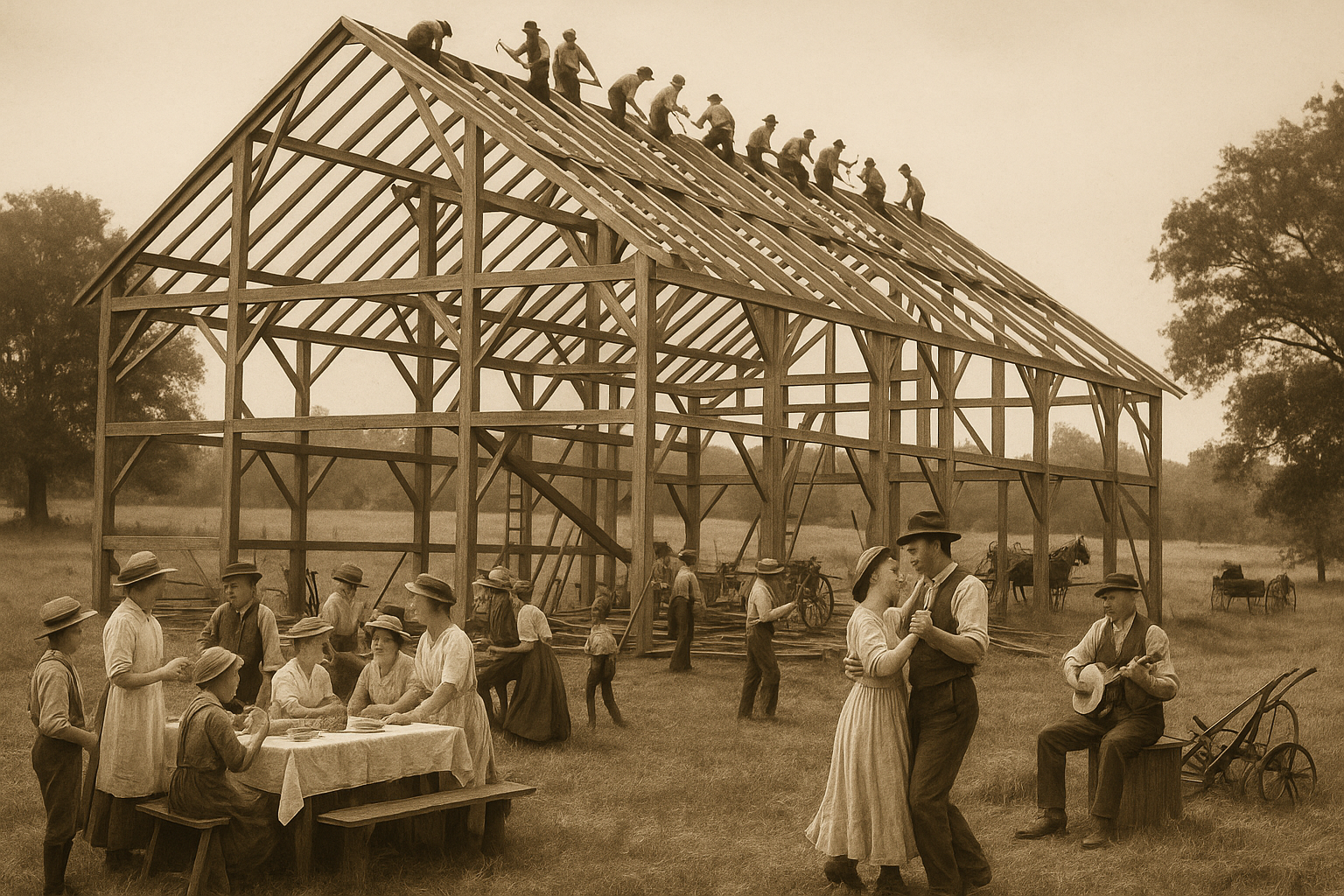In the ancient world, long before politicians learned to sell culture like soap, marriage meant something. It wasn’t a slogan. It wasn’t a tax category. It was a covenant — a sacred, biological, and cultural bond between a man and a woman, built on the natural complementarity of the sexes, and oriented toward family, order, and legacy. Americanism, at its core, stands on this foundation.
The Etymology and Origin of Marriage
The word marriage derives from the Latin maritare, meaning “to give in marriage, to wed,” rooted in mas — the Latin word for male. The male-centered origin reflects the reality that marriage historically involved the uniting of a man and a woman for the purpose of producing and raising children. This was true across civilizations — not as a matter of opinion, but as a matter of survival.
In Hebrew, the word for marriage (kiddushin) implies sanctification. In ancient Greek society, gamos referred to the lawful and ritual union of man and woman. Across cultures, marriage was always tied to gender distinction and biological reality. Why? Because men and women are not interchangeable. They are complementary.
Government Corrupted the Institution
Marriage, once a private and religious institution, became a tool of state manipulation when government inserted itself with tax codes, healthcare laws, and inheritance rights. By offering incentives to married couples, the government mistakenly assumed authority over something it did not create. And once government claimed ownership, it felt entitled to redefine it.
Rather than call civil partnerships what they are — private contracts between consenting adults — the government called them “marriages.” That wasn’t equality. That was linguistic fraud.
It was not about granting “rights.” No man was ever denied the right to marry — if by “marry” we mean what marriage actually is: the union of man and woman. What activists demanded was the redefinition of the term itself, turning a sacred institution into a genderless, formless arrangement based on sentiment. That’s not marriage. That’s cohabitation with legal perks.
Cultural Anthropology: Why the Union of Man and Woman Matters
Anthropologists like Bronisław Malinowski and Claude Lévi-Strauss documented the central role of male-female pair bonding in the formation of family and tribe. Every enduring civilization recognized the family as the primary cell of society. Not just any family — but the kind rooted in both maternal and paternal presence.
Children need a father and a mother. The data are clear: children raised in stable, biological, two-parent homes outperform their peers in nearly every metric — academic performance, emotional health, financial stability, and likelihood of avoiding incarceration or teen pregnancy.
According to a report from the Brookings Institution, children raised by married biological parents have the highest probability of success. The nuclear family is not outdated. It is the gold standard.
Lesbian “Marriage” and the Data That Gets Erased
Let’s be blunt. Lesbian unions — the most celebrated by the modern Left — have some of the highest failure rates of any relationship type. According to a comprehensive Norwegian and Swedish study published in Demography, female same-sex couples were 167% more likely to divorce than male same-sex couples, and over twice as likely as heterosexual couples (Andersson et al., 2006).
Why does this matter? Because many of the studies praising same-sex couples’ parenting outcomes exclude broken relationships from their data. In lesbian partnerships, when the relationship dissolves (which it statistically does, often), only one parent typically retains custody — and the relationship is no longer recorded as a couple raising children.
This statistical sleight-of-hand results in an illusion: only the “stable” same-sex households are measured against all heterosexual ones, whether intact or broken. The result is an apples-to-orchards comparison designed to sell a false equality.
In truth, studies from institutions like the Heritage Foundation and Child Trends show children do best when raised by a married mother and father. Even the Centers for Disease Control acknowledged in a 2010 report that children from fatherless homes are at dramatically higher risk for behavioral disorders, incarceration, and poverty.
Marriage Is Not Love — It’s Structure
A culture that defines marriage as “two people in love” is a culture that has traded civilization for sentiment. Love matters, but love is not enough. Marriages are built on duty, design, and difference. That’s why men and women are made for each other — not just emotionally, but biologically, economically, and spiritually.
Americanism depends on ordered liberty. Ordered liberty depends on strong families. And strong families begin with strong marriages — man and woman, husband and wife, father and mother. That is not bigotry. That is biology, history, and common sense.
The redefinition of marriage didn’t expand the institution. It hollowed it out. And until we reclaim the true meaning of marriage, we will continue to see rising divorce, declining birthrates, fatherless homes, and societal collapse.
We were warned. But we were told to “follow our hearts.”
It’s time we follow the truth.
Sources:
- Andersson, Gunnar et al. “The Demographics of Same-Sex Marriages in Norway and Sweden.” Demography, Vol. 43, No. 1 (Feb., 2006), pp. 79–98. https://www.jstor.org/stable/4137220
- Brookings Institution, “The Family Structure Problem.”
- Heritage Foundation, “Marriage: America’s Greatest Weapon Against Child Poverty.”
- Child Trends, “Parenting and Family Structure.”
- Centers for Disease Control and Prevention (CDC), National Health Statistics Reports, No. 23, June 2010.
- Malinowski, Bronisław. The Family Among the Australian Aborigines. 1913.
- Lévi-Strauss, Claude. The Elementary Structures of Kinship. 1949.
Let me know if you’d like a visual for this article or a trimmed-down version for social posting.



